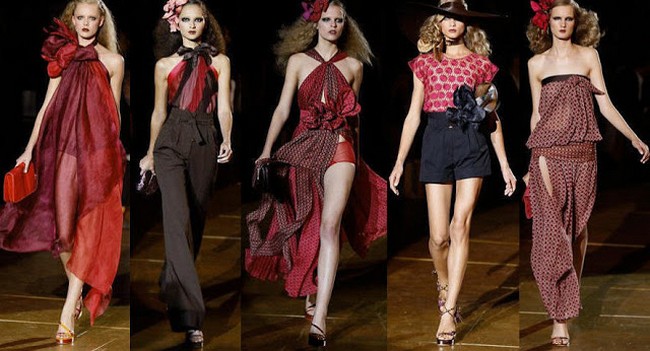Is fashion today mostly an art or a business? Can there truly be middle ground, allowing designers to express their creativity and have a profitable company? Or must leaning towards one component come at the expense of the other? Let’s explore.
(images via tmagazine.blogs.nytimes.com and fifi-lapin.blogspot.com)
Much like with painters and novelists, focusing on their artistic instincts and letting their work speak for itself provides fashion designers with a much-needed creative outlet. However, with it also comes a risk of not appealing to everyone. And while getting more in tune with the taste of the consumers can offer a label a better chance at overall commercial success, it does hinder artistic liberties, confining designers to being mere followers of trends—instead of setting them.
Production expenses need to be considered here as well. As a norm, the more outlandish the piece, the more expensive it is to produce, making its price quite steep (i.e. less desirable to buyers). That poses another challenge, as the people behind the brand have to find a way to incorporate unique design elements into their product (because consumers expect that from fashion labels) without alienating shoppers with high cost.

This luxury multi-brand store in Budapest houses tiered products, offering something for every discerning fashionista
(image via retaildesignblog.net)
An effective method for dealing with this conundrum is creating tiered collections. In a nutshell, the top pieces are those with the “wow” factor. They reflect unrestricted originality and are also generally seen on runways, in fashion magazine editorials, and window displays. The middle merchandise includes garments that offer a designer’s reinterpretation of fads and trends. And the base represents the brand’s staples, the lowest-priced items that serve as entry points tasked with attracting new clientele.
With this much variety in a product lineup, the designer can balance out their need to express their ingenuity with ability to offer what their target audience looks for. Moreover, a tiered collection offers flexibility. Through styling their pieces for lookbooks, editorials or runway shows, the couturier can prove that basics don’t have to look boring and uninspired, while avant-garde items have the potential to become an essential part of the everyday ensemble.
(image via whatiamloving.blogspot.com)
The struggle to achieve a win-win situation in the name of the union of creativity and sellability is something that a lot of those who have dared to start their own line are all too familiar with. And at the end of the day it all comes down to moving the business forward amidst fast-changing trends and increasing market demands. However, it’s not about completely adjusting to the consumers’ wants, but rather about listening to the voices of the designer’s inner artist and those of prospective clients, and finding ways to blend them into one. And the challenge only makes things more interesting, doesn’t it?




About The Author: BridgeShowroom
Since 2011, BRIDGE SHOWROOM has been representing Europe's finest designers in America.
We are partners, linking together retailers and designers.
More posts by BridgeShowroom